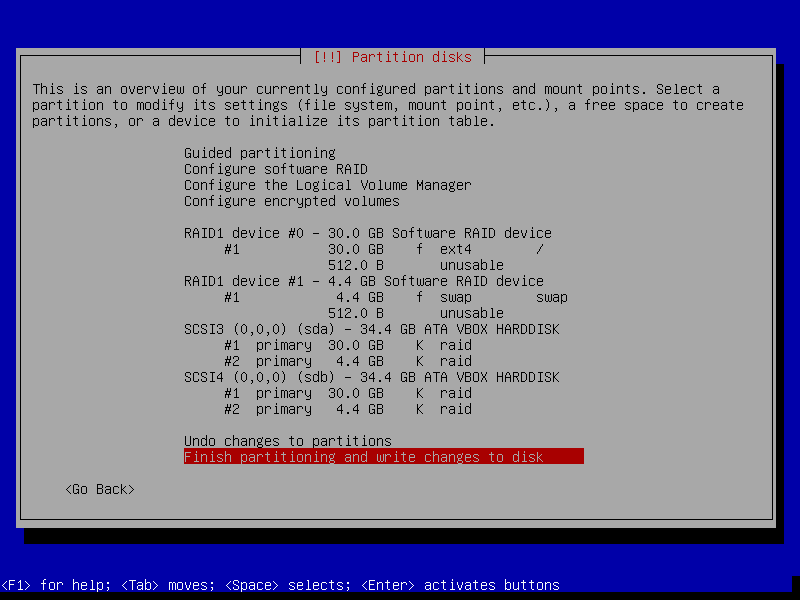


Also select the "Bootable flag:" line to change the value to "on". Use the rest of the free space on the drive and choose Continue, then Primary.Īs with the swap partition, select the "Use as:" line at the top, changing it to "physical volume for RAID".

By default this is "Ext4 journaling file system", change that to "physical volume for RAID" then "Done setting up partition".įor the / partition once again select "Free Space" on the first drive then "Create a new partition". Calculating the swap partition size for servers is highly dependent on how the system is going to be used. Enter the partition size, then choose Primary, then Beginning.Ī swap partition size of twice the available RAM capacity may not always be desirable, especially on systems with large amounts of RAM. This partition will be the swap partition, and a general rule for swap size is twice that of RAM. Select the "FREE SPACE" on the first drive then select "Create a new partition". Repeat this step for each drive you wish to be part of the RAID array. Select the first hard drive, and agree to "Create a new empty partition table on this device?". This section will guide you through installing Ubuntu Server Edition using two RAID1 partitions on two physical hard drives, one for / and another for swap.įollow the installation steps until you get to the Partition disks step, then:
SOFTRAID LINUX DRIVER
The RAID software included with current versions of Linux (and Ubuntu) is based on the 'mdadm' driver and works very well, better even than many so-called 'hardware' RAID controllers. RAID is implemented in either software (where the operating system knows about both drives and actively maintains both of them) or hardware (where a special controller makes the OS think there's only one drive and maintains the drives 'invisibly'). Redundant Array of Independent Disks "RAID" is a method of using multiple disks to provide different balances of increasing data reliability and/or increasing input/output performance, depending on the RAID level being used. Here are the instructions I use (unfortunately I cannot remember the original source): Be Warned this is not an exercise for the fain of heart.
SOFTRAID LINUX INSTALL
You need to set up your hard disks as RAID disks BEFORE you install any OS.


 0 kommentar(er)
0 kommentar(er)
